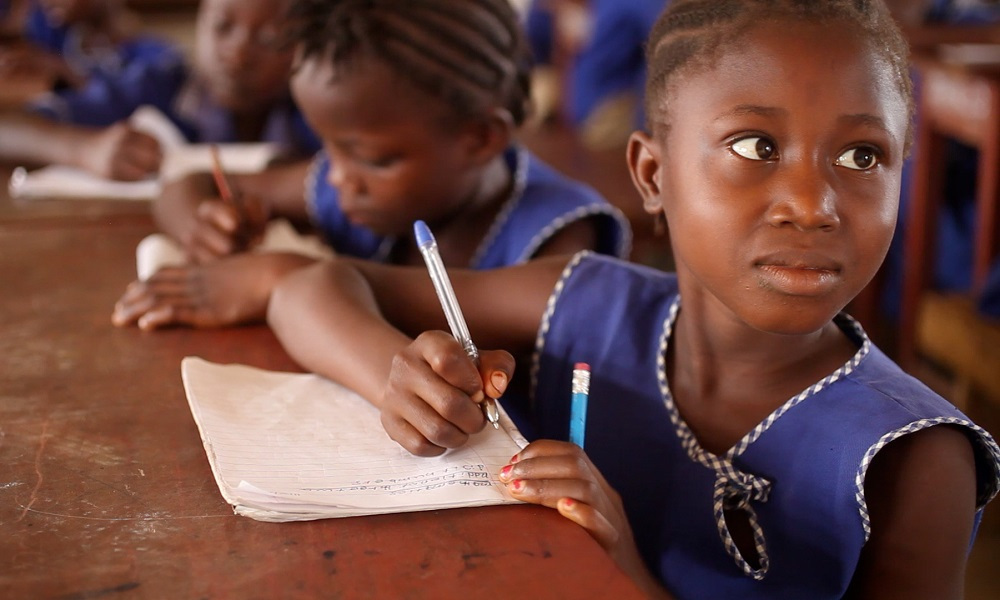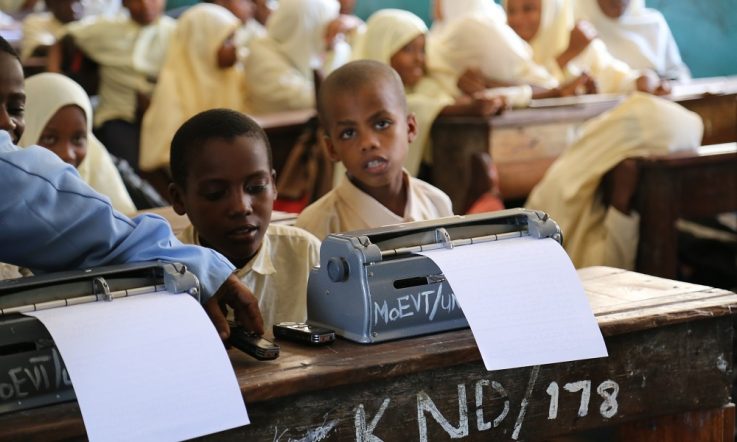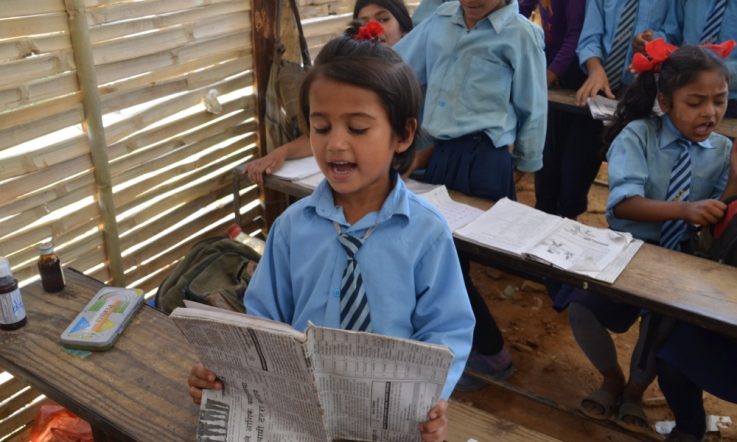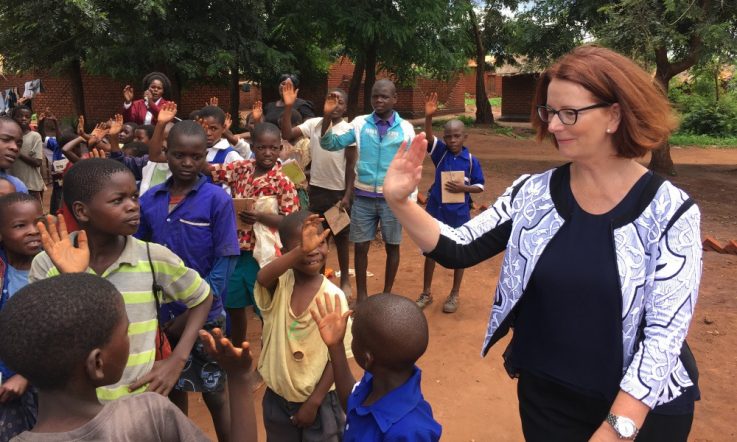Supporting schools in conflict-affected countries
It is no great secret I loved school. In fact, I anticipated the start of the school year with the kind of enthusiasm most children only reserve for Christmas.
The return to school each year was approached with methodical and precise rituals. Exercise books were labelled with my name. Text books were carefully covered with clear plastic wrapping. If it was a particularly fortuitous expedition shopping for school supplies that year, some sticker embellishments would be added for extra decoration.
The most carefully guarded possession was of course my pencil case, in which lived my freshly sharpened pencils, my eraser and small ruler. Later in my school days, these possessions were joined by things like a compass and a basic calculator.
On my arrival at school, if we were allowed to pick our desks, I would select one a row back from the front. I liked to have a clear sight of the blackboard and the teacher. Across my school years the desks changed from left over old wooden ones, with a redundant spot for an ink well, to sturdy laminate.
In both my primary school and high school, many of the same classrooms I sat in are still in use. However, they look very different today.
Seating now encourages group work, not silence and regimentation. Students hunch over laptops or tablets instead of exercise books. Blackboards are considered a relic of the ancient past, and electronic resources are favoured over text books. Some schools are now even doing away with furniture, and instead opting for ‘flexible learning areas' with not a desk in sight!
It is troubling to think that while Australian children have benefited from great advances in learning and their school environments, there are still many children around the world who would only dream of a simple desk and chair, or even more fundamentally, just a classroom to learn in.
Basic infrastructure and learning supplies
It is despairing but true; there are many children who live in a world where even the most basic of school infrastructure does not exist. These are places that have been devastated by war, conflict and disease. These are places where children can only hope for the chance to get an education.
The Global Partnership for Education (GPE), of which I am Chair, has a mission to ensure all children have access to a quality education. As part of this mission, GPE works in many conflict-affected countries to help get basic infrastructure and learning supplies to children and teachers.
Recently GPE has been able to provide support in Yemen, one of the poorest countries in the Middle East, which is still being ravaged by civil war. The conflict has been ongoing since 2015 and the impact on Yemeni children has been significant.
Yemeni parents rightly hold grave concerns for the safety of their children on a daily basis. Sending a child to school can be dangerous. There is the ever-present risk they could be injured or killed along the way. Even if parents are courageous enough to want to send their child to school, their local school might have been bombed, looted or otherwise destroyed.
Yet, despite all this horror and risk, it is estimated 90 per cent of schools in Yemen are still functioning, providing education for over five million children, which is a tremendous achievement. However, the quality of learning in these schools is limited, and it has been reported that some are only operational for two hours a day. Many of the schools that are operating have been significantly damaged or are in temporary structures like tents.
Funds raised through GPE have been able to help, with 17 000 pieces of furniture for 170 Yemeni schools procured and supplied.
A different kind of crisis has confronted the children of Sierra Leone. The Ebola epidemic that gripped the West African region in 2014-15 saw the highly infectious and fast acting Ebola virus kill 11 000 people in Sierra Leone and cause significant disruption in the region.
Beyond the tragedy of the death toll, and imminent need for medical supplies, the longer-term effect the virus has had on children and their schooling is still being felt. At the peak of the epidemic, due to the risk of widespread infection, public gatherings were banned, and thousands of schools were closed.
If children were to return to school, the risk of the virus spreading needed to be eliminated. Thanks to funding support of US $1.45 million from GPE, over 8000 classrooms were reopened, with 5970 schools disinfected, and 36 000 handwashing stations distributed to help control any future spread of Ebola.
The GPE funding has also supported over 5000 teachers to be trained in ways which they can help to keep students and other teachers healthy – like encouraging regular handwashing and encouraging sick students to stay home.
While my days at school probably sound quite quaint to the average Australian kid nowadays, they would still be considered as filled with opulence compared to that of the children in Yemen and Sierra Leone. Bridging the undeniably large divide between our nations is an immense challenge, but we must start somewhere.
GPE is determined to continue our campaign to ensure those who are the most disadvantaged and marginalised in our world are not denied their chance for an education.



